Summer newsletter 2023
As temperatures soar and rainfall plummets, the summer season is well and truly here! We’re delighted to announce that Sama Euridge returned from maternity leave to our team of Wildlife Wardens in March and Katie Jones joined the team in May. Both Sama and Katie are part-time, while Imo, who joined at the end of last summer, remains full-time. We are so excited to have a full team once again and look forward to working together to help protect local wildlife - find out more about our team here.
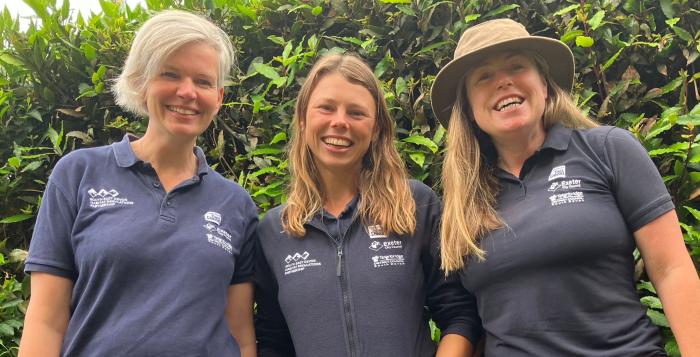
(left-right: Wardens Katie, Imo and Sama)
Where are our wintering birds?
As Spring advances, our migrating waterbirds depart for distant breeding grounds and the estuary feels empty again - have you ever wondered where our wintering species spend the summer? Warden Sama looks at Curlew migration.
During the winter months, the Exe estuary supports close to 20,000 waterfowl and waders. The mudflats and sandbanks become a natural spectacle, filled with flocks of foraging water birds, ebbing and flowing with the tide. Oystercatcher are a common sight and sound – and the call of the curlew is instantly recognisable, echoing evocatively across the estuary.
Curlew and their evocative, burbling call are a familiar sight and sound on the tidal mudflats of our estuary.
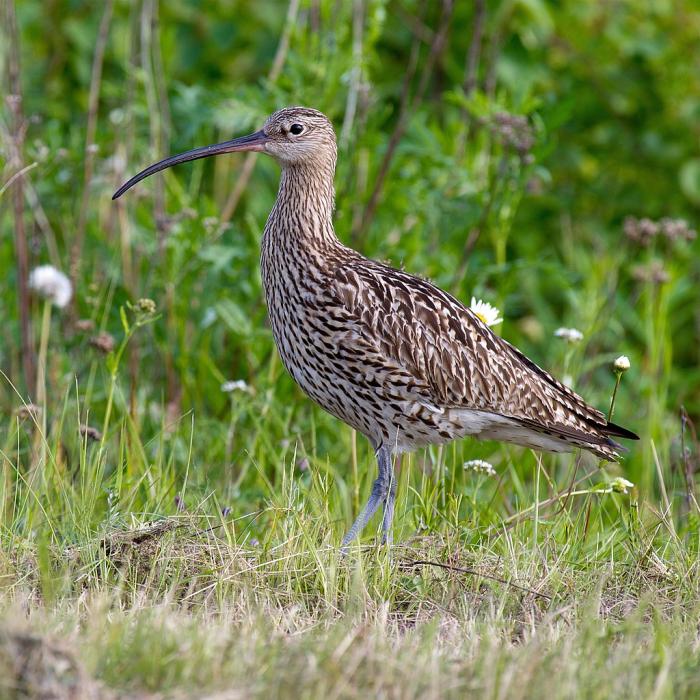
Curlew. (Photo credit Andreas Trepte, www.avi-fauna.info. Licensed, no changes)
Characterised by their slender, down-curved bill and mottled brown plumage, these are the largest of our wading birds. While at distance they can seem deceptively compact, their outstretched wings span over a meter. Were you ever lucky enough to find yourself standing right next to one, their head would reach somewhere around your knee.
Though visible throughout the year, curlew numbers on the Exe are at their greatest over winter. Birds which breed across northern Europe and Russia migrate here, drawn to the marshes, mudflats and estuaries of the UK for the mild climate and abundant food.
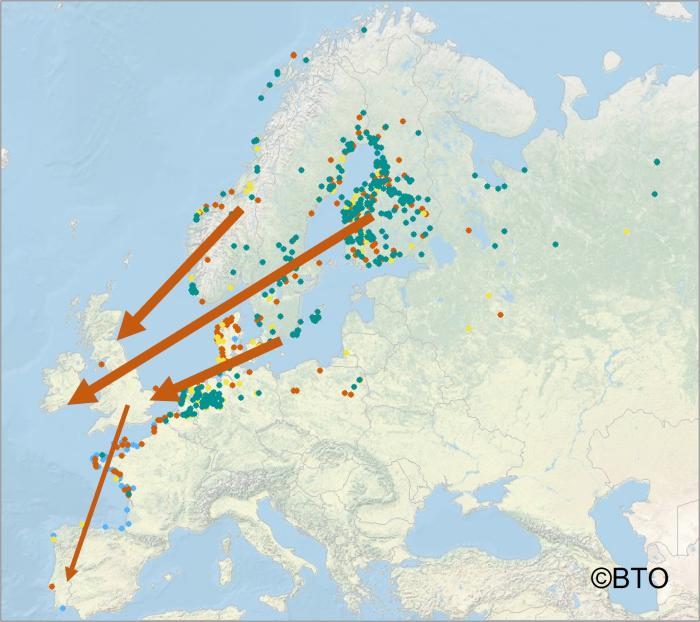
Across the UK, there are around 125,000 curlew resident during the colder months, and then 59,000 breeding pairs during the spring and summer. This impressive figure makes the UK, arguably, the most important country in the world for curlew! Perhaps they should be our national bird?
So where the Exe wintering birds now?
From February, curlew flocks begin to break up and return inland to breed. Rough damp pasture and traditional hay meadows – once widespread across the UK, are their preferred breeding location – but habitat loss means breeding grounds in this country are now increasingly concentrated in the uplands and heather moorlands of northern England and Scotland.
The majority of birds that winter on the Exe will cross the North Sea to breed in Scandinavia, the Netherlands, Germany, Poland and Russia – and we are lucky enough to have data to support this: The Devon and Cornwall Wader Ringing Group have recorded Curlew ringed on the Exe in all these countries.
Of course, migration is complex - birds from the Exe migrate in seemingly all directions! Interestingly, ringed Exe wintering curlew have also shown up in breeding assemblages in Gloucester, Norfolk, Suffolk, Pembrokeshire, Powys & County Durham. Click the link above to the ringing group to read a bit more about these data.
Curlew typically live for several decades, but generally they don’t breed until their 2nd year. The few that you see wandering the mudflats at this time of year may include first or second year juveniles, not yet feeling the draw to the summer breeding grounds. Juveniles have noticeably shorter bills - it takes time to grow the whopping 15cm bill of an adult.
Curlew have incredible "site fidelity", returning to winter on the same stretch of coast and returning to the same patch of bog or pasture each spring. Of course, this leaves them terribly vulnerable to the effects of habitat degradation and the past decades have seen worrying declines in the breeding population of Curlew within the UK.
- UK decline of 48% (between 1995-2020) of breeding pairs (BTO)
- With breeding populations in NI and Wales estimated to have declined more than 80% (Wales 1993-2006; NI 1985-2013)
- Wintering population decline of 33% (BTO)
Like many wading birds, curlew lay their eggs in a nest on the ground - known as a scrape. The dedicated parents take turns to incubate the eggs for around 4 weeks. The young then leave the nest and roam around with their parents, hungrily foraging for insects and worms, for another 4 weeks until fledging. During this time it is easy to imagine how vulnerable they are to roving predators such as foxes or crows.
Significant research has gone into investigating curlew decline, and egg predation by mammals and birds has emerged as a key factor contributing to poor breeding success. However, this abundance of predation is in itself driven by changes in land use and management. Agricultural intensification and afforestation changes the landscape, with greater tree cover and dense scrub favouring predators, leading to greater nest predation.
A study looking at curlew breeding in East Anglia for 3 summers from 2019, concluded predation accounted for 86% of nest failure – there are typically 3 or 4 chicks per nest, so it doesn’t take great mathematical skills to calculate hatching success is not high enough to sustain even our current reduced population.
But there is still hope: In 2015, curlew were added to the Red List on the UK Conservation Status Report – the highest conservation priority. There is now some really fantastic research being undertaken by numerous conservation organisations to understand how we can support curlew populations.
Here on the Exe, our message is still the same – please give our shorebirds the space they need to rest and feed undisturbed, it could make all the difference. Long may the call of the curlew be heard echoing across the water.
We are excited to announce that Heath Week will again take place from 22nd to 28th July!
Heath Week is a collaborative event, run by the Pebblebed Heaths Conservation Trust, RSPB, Wild East Devon, Devon Wildlife Trust, Devon Loves Dogs and South East Devon Wildlife. It celebrates heathland ecology, history and recreation.
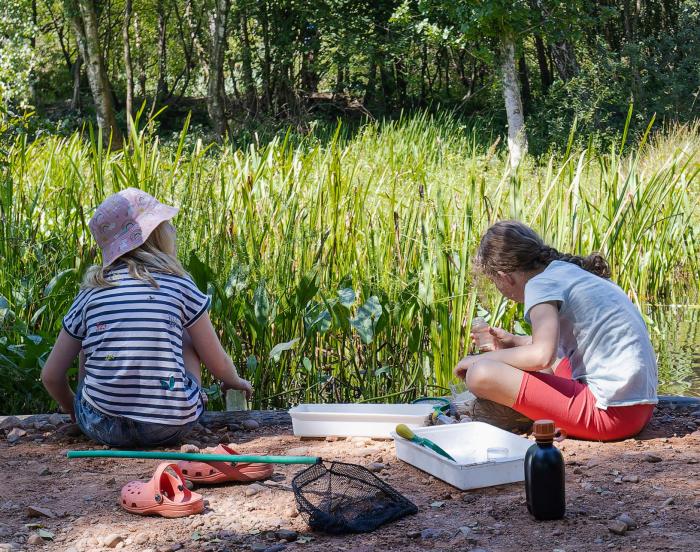
A variety of bookable activities will take place from dawn to dusk including wildlife walks, talks, craft and games, exploring the Pebblebed Heaths National Nature Reserve.
Keep an eye out for a full activity schedule which will be published soon , the Pebblebed Heaths Calendar and our social media channels.
Timber harvesting will be taking place on the Pebblebed Heaths (at Uphams Plantation) throughout June. Phased access restrictions to the permissive paths in the plantation will be in place during the works. For your own safety please follow all safety signs and directions.
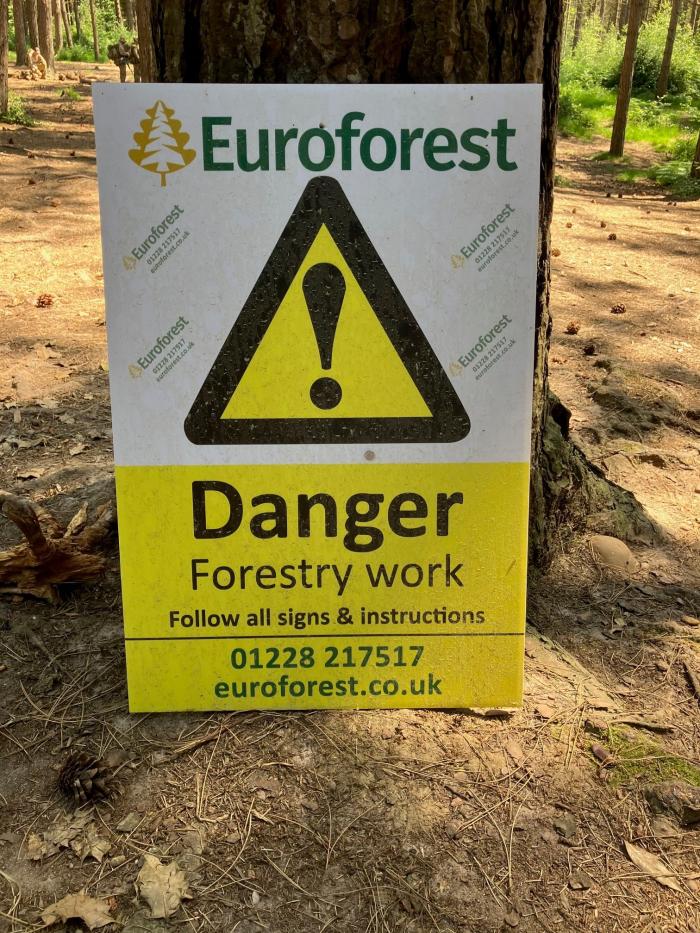
Are you a part of a community group, parish/town council or collaborative local community partnership in Devon?

Wild About Devon are seeking to support groups willing to take action for local wildlife with grants of up to £500! These grants can support projects such as wildflower meadow and pond creation, pollinator friendly plants, bird/bat boxes and much more.
If you’re interested please follow this link to get more information and apply online. Good luck!
Our team of Wildlife Wardens have been busy uploading walks across East Devon, Exeter and Teignbridge. These walks include a route description, parking options, wildlife to look out for and any rules regarding dogs and accessibility. Check them out here!
Our virtual wildlife walks provide you with an opportunity to explore the diverse habitats of South East Devon in your own time.
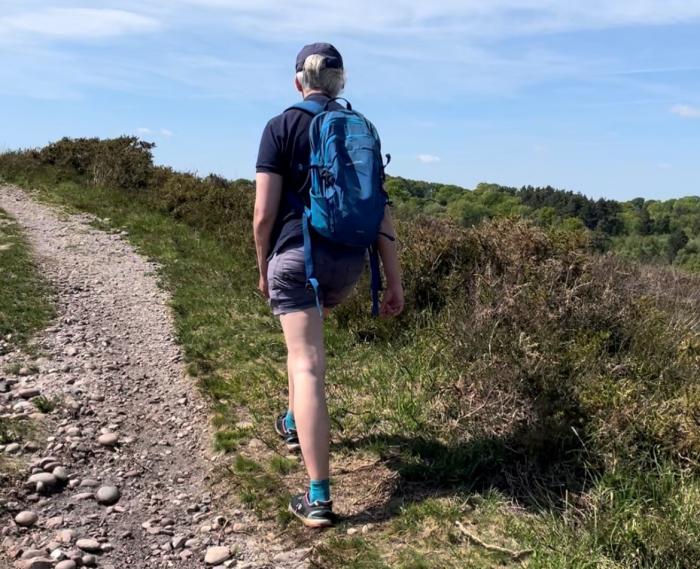
This summer, we would highly recommend exploring the clifftop wildflower meadows of Orcombe Point, or heading to the sunny butterfly-rich glades of Ashclyst Forest. Even better, download the wildlife apps “Seek” or “Merlin” and bring your smartphone to help you identify plants and birds along the way!
We’ll be sharing more wildlife walks, so keep your eyes peeled! Please note, if you’re looking for more dog specific walks or guidance on accessibility for dogs this summer, check out Devon Loves Dogs.
Recommended watching : Wild Isles and Springwatch
This spring we were thrilled to see Sir David Attenborough bringing his world-famous wildlife documentaries to our very own islands, the United Kingdom. The five-part series celebrates stories of the special wildlife we have in the UK, journeying across Britain’s diverse habitats and geology. For the viewer, the programme cultivates feelings of wonder and excitement while underlining the unfortunate depleted state of our wildlife, pleading people to work together to conserve and restore nature.
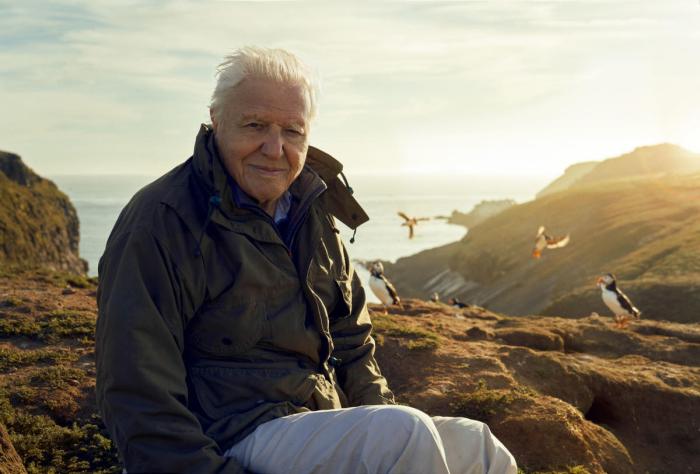
The fourth episode, freshwater, was particularly relevant to conservation on the Exe Estuary, including stunning footage of migratory birds and tales of a fish which was once prevalent on the river, Atlantic salmon. Another highlight is the footage of the Eurasian beaver, a keystone species and wetland creator.
Locally, beavers again are making a comeback, with recent surveys on the River Otter (which runs approximately 6 miles east of the Exe Estuary) recording 20 beaver territories (with one or more beavers in each) on this river catchment alone!
If you haven’t already (or if you fancy watching again) we’d highly recommend this brilliant series which will remain on BBC iPlayer for at least the remainder of this year.
BBC iPlayer - Wild Isles - Series 1: 4. Freshwater
BBC Two - Springwatch - Available now
You may have heard of the term ‘conservation grazing’ but what is it and why is it done?
Conservation grazing is one of those phrases people mention a lot in conservation, it means using livestock to manage a site for wildlife, whether it be grassland, heathland, woodland, wetland or scrub. Sheep, cattle, ponies and goats are most frequently used for conservation grazing depending on the type of habitat present and the aims of the management.
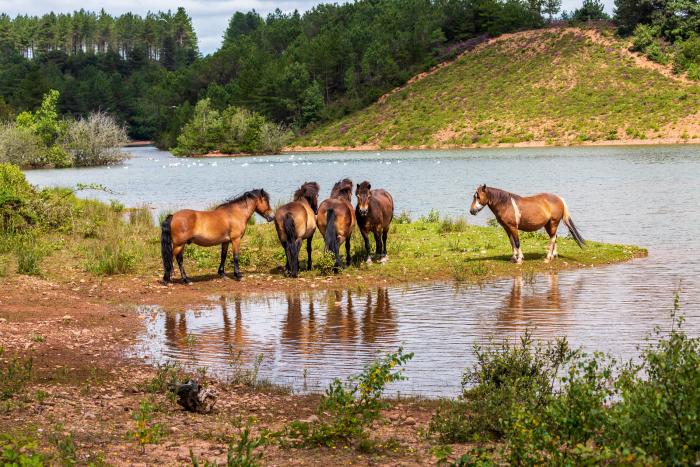
On the Pebblebed heaths, the aims of the management are to:
- inhibit tree seedling growth,
- reduce the cover of grasses,
- maintain structural diversity of vegetation; and
- increase the diversity of herbs other than grass.
Grazing is undertaken using rare breed cattle such as Devon Reds, and Dartmoor ponies. Cattle are non-selective grazers, they use their tongues to twist and pull up grassland which creates bare patches. They also eat as they walk leaving areas of longer coarser grassland which creates a more diverse structure. Ponies graze close to the ground but will also create latrines within a grassland that they will not graze which also creates structural diversity.
Rare and native breeds of livestock are used because they are hardy and sturdy and their bodies can tolerate winter weight loss as a natural process due to grazing low nutritional value grassland. The cattle and ponies are not fed additional supplementary food as for the heathland to persist the ground must be nutrient poor and not fertilised by cattle and pony dung.
The livestock are additionally not treated with anti-worming drugs as residue of the drugs in their dung are known to affect dung associated insects which are present on the heaths and form an important part of complex food webs.
What to see this season:
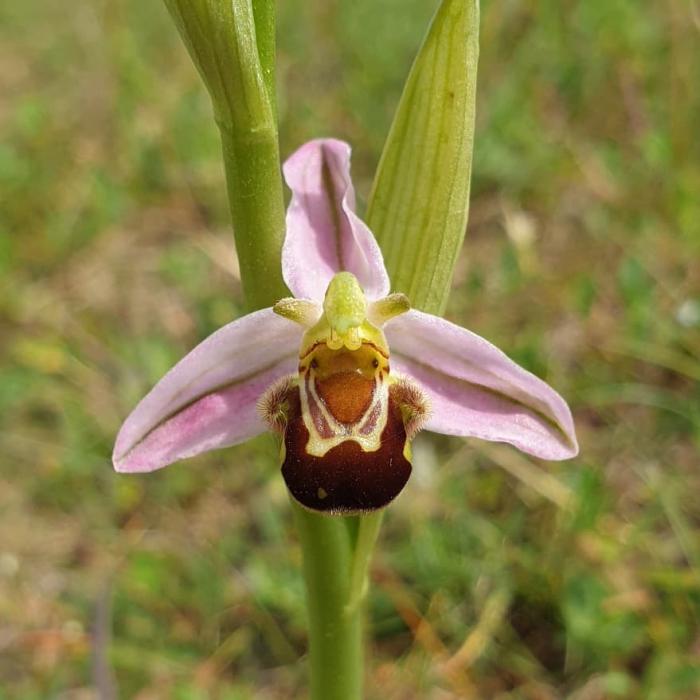
This diminutive flower is most easily seen at Dawlish Warren, where the rangers have roped off areas where the orchid is growing amongst the grassland. The bee orchid evolved its unusual appearance to attract its main pollinator by looking and smelling like a female bee! The males land on the flower hoping to mate, and instead the orchid transfers its pollen onto the bee which is then carried to another orchid. Sadly, the species of bee which pollinates bee orchid, doesn’t live in the UK, so here the plants are self-pollinating.
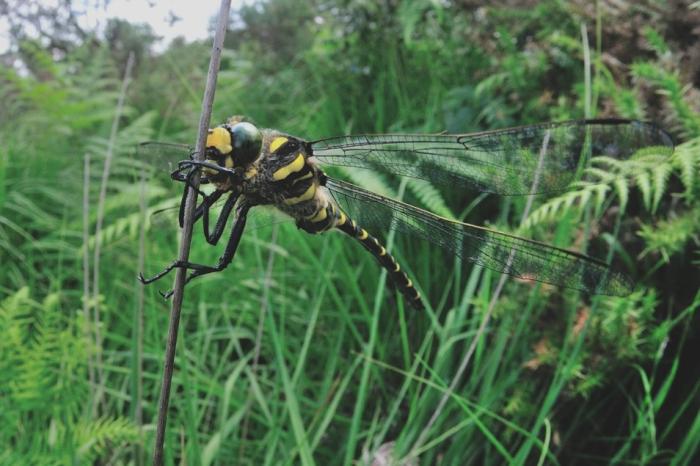
A striking, large black dragonfly with yellow bands along the body and bright green eyes. The females are the longest dragonfly in the UK because of their ovipositor (tubular structure used for laying eggs). Both sexes are voracious predators that feed on wasps, beetles, bumblebees and even other dragonflies! You can see them flying between May and September at Bystock Pools, near Exmouth and in the areas of heath around the pools.
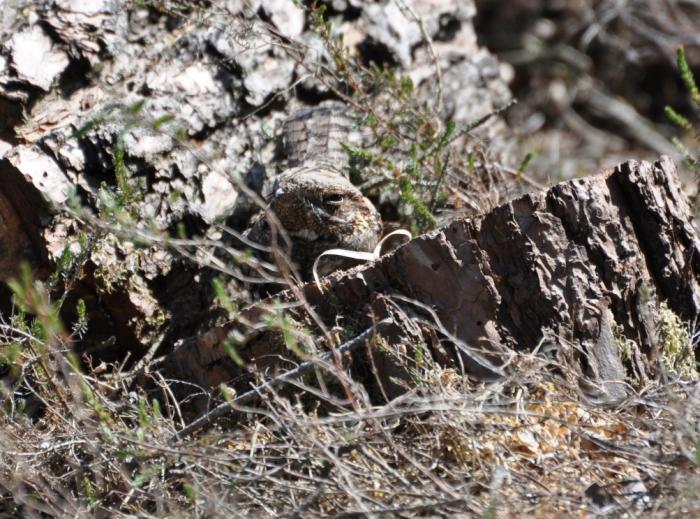
A summer visitor to the Pebblebed Heaths, nightjars arrive in April from their wintering grounds in Africa. They nest on the ground in heathland and in young conifer plantations, and are very well camouflaged with feathers that look exactly like bark. At dusk, the males can be seen displaying to the females by flying around them and wing clapping. The distinctive ‘churring’ call is often also heard from a prominent perch such as a dead tree. The easiest way to see nightjars is on a nightjar walk which are being undertaken between May and August, by the Pebblebed Heath Conservation Trust, the RSPB and Wild East Devon.
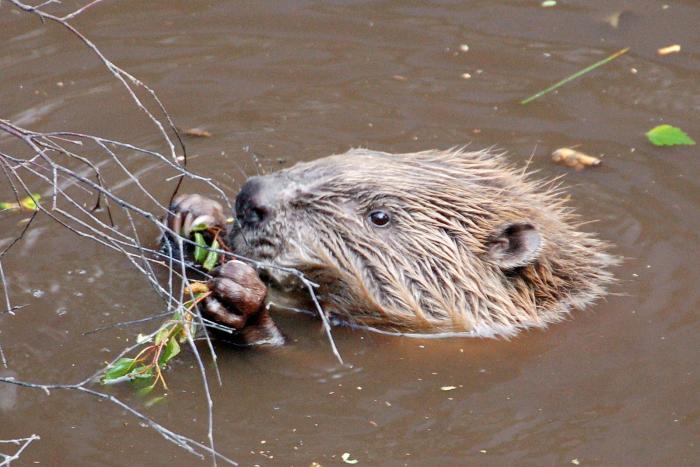
(Image credit : Paul Stevenson. (licensed, no changes).
Beaver kits are born between May and July and leave the lodge in late summer. Going out in the early evening and walking the paths adjacent to the River Otter, near to Otterton, provides the best chance of seeing them. Although during light summer evenings they can also be seen during daylight hours, especially from late afternoon to early evening as well as at dawn. To increase your chances of seeing a beaver, leave your dog at home if you can. Beavers have an acute sense of smell and whilst the adults on their own are often tolerant of dogs, when they have kits they can see dogs as a threat.
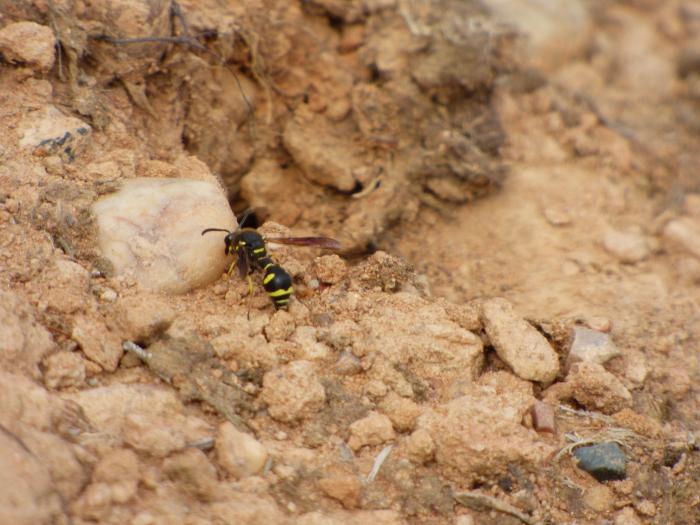
Look out for the curious clay nests on gorse or heather next time you’re at the Pebblebed Heaths. These are the nests of the potter wasps, the purpose of the pots is more than a little macabre!
After mating, the female wasp begins the process of adding water to soil to enable her to roll several balls of mud. She takes the balls to the nest site and uses them to construct her pot. Each pot can take up to 25 balls of mud and 2-3 hours to construct. Upon completion of the pot, she lays a single egg inside and then collects small caterpillars which are stung several times to paralyse them (but keep them alive) and puts them inside the pot.
Depending on the size of the caterpillars, it will take between 10 and 38 caterpillars to fill the pot. She then seals the top of the pot with more mud. When the wasp larva emerge it will have a fully provisioned larder to feast on before it breaks out of the pot as an adult. Each adult female builds between 10 and 25 pots in her lifetime and only lives for 2-3 months!
Thanks to Buglife for the info!